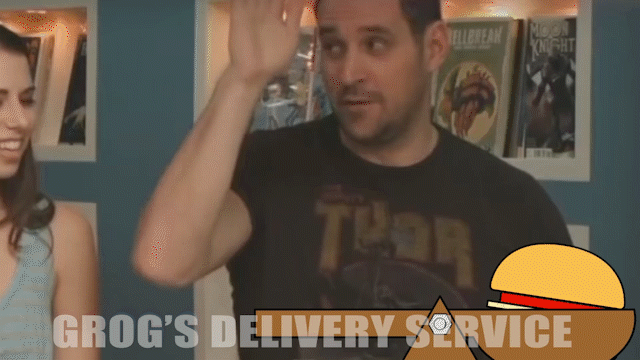GM Tips Our series to help Storytellers and Game Masters improve their craft and create memorable roleplaying experiences. Last week, we’ve brought life to monsters, and so this week we will discuss creating more cosmopolitan cities.
Just where are your characters going to buy a frying pan made out of mithril? Can you imagine the players’ reaction to strolling a museum filled with stuffed creatures they killed? Cities in campaigns are major hubs of commerce and often the central point of the entire campaign. It’s where characters shop for items, spend their downtime actions, and sometimes it’s the entire campaign setting itself.
With a little tweaking, cities can become the central place for character concepts and entire stories themselves. Often times, we fall trap to the eurocentric backdrop in fantasy settings, or even in sci-fi or futuristic, wash everything with the same shade of color. The truth in real life is cities are filled with countless cultures and backgrounds, and these storyteller tips are designed to showcase some of these in your current campaigns. I also highly recommend watching Matt Colville’s YouTube series on world building: it’s amazing and offers some fantastic advice on towns.
Adamantine Waffle Irons
Okay, not every group of adventurers is going to be so obsessed with the importance of breakfast foods as my group is, but there is a lesson to be had in the quest to obtain indescribable kitchen goods—cities have odd shops. Not just one or two of them either, but entire streets lined with small nitch and craft shops and custom boutiques and they always have. Merchants from far away and foreign cultures set up shops, locals complain about immigrants, new foods are introduced, violence and street crime grows, and taxes are levied.
Make an excel spreadsheet and fill it with store names and one or two niche items. From tourist snow globes to spell scrolls that generate temporary tomatoes to throw at performers. Create branding for a handful of shops and you can even reuse them from city to city. Brooke-and-Talbot’s adventuring supply and tobacco emporium is a staple in my games. If you create one specially crafted NPC shop for a small town, and franchise it, by the time you get to a city you’ll have everything already done for you so no extra work is created.
Construction Ruins Everyone’s Day

When was the last time you walked in a major city that wasn’t under construction? Often times in describing cities, storytellers describe all the buildings looking a similar way in a finished state. It’s not hard to fall into this trap because almost every piece of fantasy art ever depicts the pristine conditions of ancient cities. The genre of Cyberpunk is often the reverse of this, with guttered cities, and skyscrapers continually expanding upwards is more accurate.
Ancient cities were no different than todays when it came to building. New buildings were built on top of old ones and reused walls, construction closed down lanes of traffic, and underpaid laborers worked till death. Often imported in or captured from war, unless they were fortunate enough to be members of a guild, these workers can serve as a great plot hook to give your campaign cities life. Once you get past the merchant and bazaar areas, at least every city block should have something under construction. If not currently under construction, coming under, or freshly finished.
After all, it’s a great way to cut the tension by having some expensive statue dropped in the distance as they used ropes to hoist it.
Food Is Everything

The rest of your city should be food. The consumption of it, the cooking of it, the selling of it, growing, distribution, and thievery of it. Food, water, drinks, and medicines are what makes any city come to life for players. It’s instantly recognizable and you can even go through fantasy cookbooks and match the dishes of the cities your adventurers visit! Storytelling through taste is a time-honored tradition passed down through the ages and I sure as hell can’t think of a reason to stop that anytime soon.
Inside the game, keep a coin with you behind the screen for when your players go to a food joint. Heads it’s great, tails it sucks. Doesn’t matter if it’s chicken on a stick or some gourmet nobility meal. The act of flipping a coin sets it apart from dice mechanics from combat, and after you flip enough coins, your players will start associating coin flips with food excitement, and your city will become a vibrant place they can taste. (For better or worse, since food poisoning is a real thing.)
What are some of the best monster encounters you’ve ever had? Tell us your story in the comments below!
Looking for More Useful GM Tips?
- Mash-up the Dread System in your tabletop RPG’s to increase tension.
- How to handle long-running and epic rpg campaigns.
- Shop the Geek & Sundry store for DM gear, like a “How Do You Want to Do This” hoodie!
Featured Image by: Vistani Caravan, Barovia Wizards of the Coast
Image Credits: Neverwinter Ruins, Wizards of the Coast, Irony Productions (Grog’s Delivery Service)
Rick Heinz is the author of The Seventh Age: Dawn, and a storyteller with a focus on LARPs, Wraith: The Oblivion, Eclipse Phase, and many more. You can follow game or urban fantasy related thingies on Twitter or Facebook.